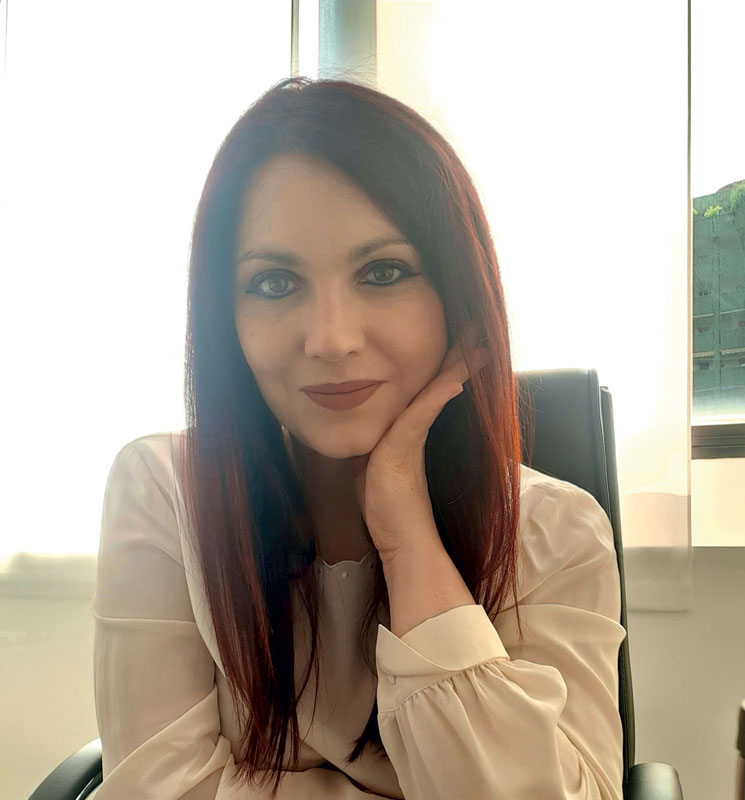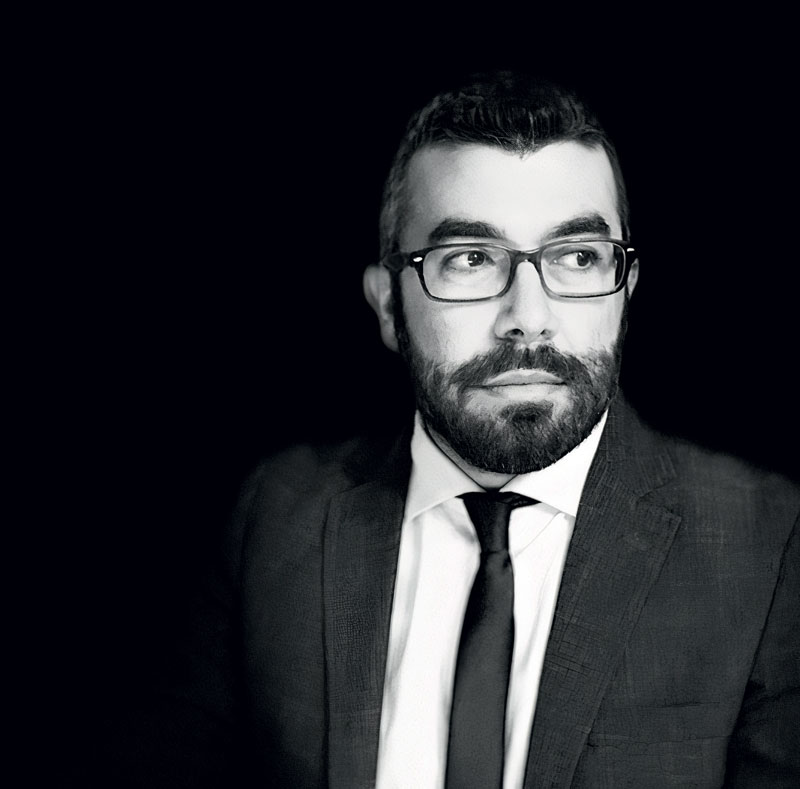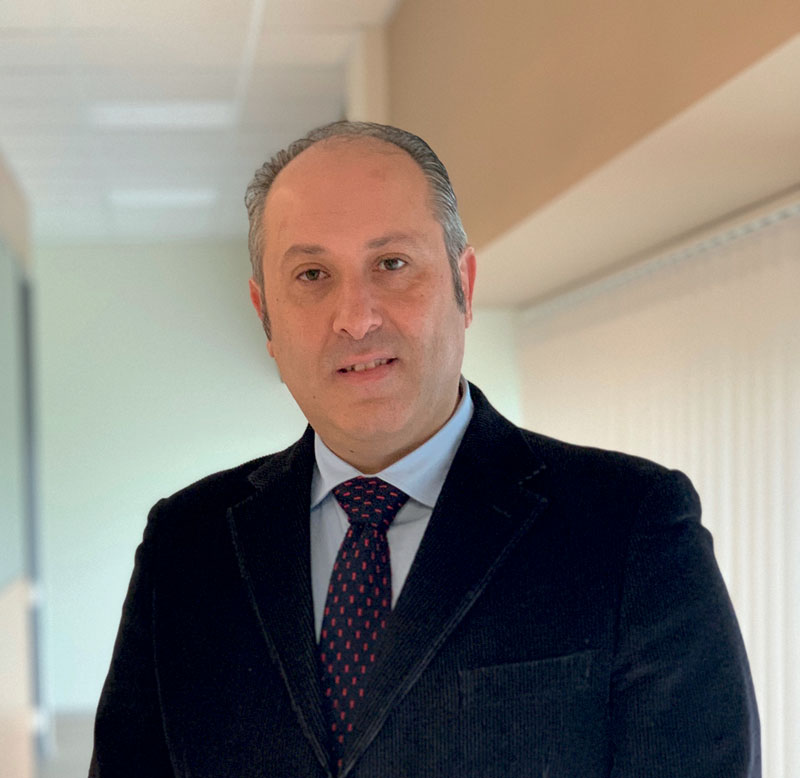Financing projects with crowdlending
Crowdlending is a little-known word: it is closely related to crowdfunding and represents non-bank financing, ideal for small and medium-sized enterprises. It is more precisely a system of microloans, granted through an online platform. This innovative form of financing and its advantages were the subject of the webinar “Crowdlending, the lean way to finance your growth projects”, held by Francesca Buran, Marketing Specialist and Executive Assistant at AIdAM; Giuseppe Scapola, Head of Business Development at EvenFi; and Luigi Maldera, CEO of MBL Solutions, who tested this method of financing on the field.



Francesca Buran, how did the idea of talking about crowdlending come about?
The issue of financing is always sensitive for companies, and in recent years the situation has become even more complex. For companies in the mechatronics sector, however, an innovative tool has appeared which has great potential: this is crowdlending. It is not really a traditional subject for the association, but we thought it might be an interesting topic for our companies in 2022. The idea of talking about crowdlending came from a conversation with Luigi Maldera, owner of MBL Solutions (an AIdAM member company), who has had a very positive experience with this tool. He represents a company which, both in terms of its mission and size, is very similar to the companies making up the structure of our industry. We thought it might be an interesting conversation to suggest, to find out what the potential of this tool is and why it is becoming so popular.
Before talking about MBL Solutions’ experience, let us ask Giuseppe Scapola what crowdlending means and how will it allow companies to finance their growth projects in a streamlined way?
Crowdlending is a new and innovative tool, which companies can use to get out of those possibly deadlocked situations in which they may find themselves in some contexts by using an alternative channel of liquidity supply. What is crowdlending? As its name suggests it implies a multitude of persons offering loans. So we are talking about funding provided by a large group of people. Crowdfunding, which is closely related to crowlending, is the generic abstraction of raising money from the crowd. It is usually identified with equity crowdfunding, which is one of the ways in which companies can attract new members, allowing them to raise cash. Crowdlending is a declination of the same concept: it means nothing more than borrowing money. The important thing to underline is that with crowdlending no new partners are recruited, but liquidity is obtained from as varied and distributed an audience as possible.
We can already see a difference: in the case of equity crowdfunding the money does not have to be returned, but the profits are shared; in the case of crowdlending, it has to be returned. Instead of going to a bank to ask for liquidity for a project or for a company, dedicated platforms, such as EvenFi, are used to ask a diverse group of individuals for a loan. Personally, I have been an investor in this world for more than five years now and have been in the investment business for quite some time. I follow the FinTech world constantly and I am an industry player, so my role at EvenFi includes both the business side and the originations side, that is, finding and connecting with companies which need financing. My job is to interface with companies needing liquidity on a daily basis, interacting with them, gathering all the documentation. Once the company receives our approval, it can present its project to thousands of investors.
Crowdlending, in short, is one more possibility for companies to finance themselves in an innovative way, quickly and with the possibility of being known by thousands of people. It is therefore a very important marketing opportunity for companies: people who see the company may be interested in making connections, creating new job opportunities or placing orders. There are few companies like EvenFi in Italy, perhaps we are the only ones offering pure crowdlending. We are cross-sectoral, so we finance any type of company, from mechatronics companies to restaurant owners, from mask manufacturers to classic B2C companies.
Among other things, we are one of the very few companies in the sector to allow start-ups with zero years of life, or at any rate a very short period of existence, to finance themselves with subsidised bridge loans. Luigi Maldera, crowdlending is a tool even for companies in the mechatronics sector, and in the world of AIdAM as in the case of MBL Solutions. Please tell us about your experience, the project in which EvenFi was involved and how this somewhat pioneering initiative for the market worked out. In my opinion, it is appropriate to talk about this new instrument, because it is still a little known subject in Italy. I discovered its existence by surfing the web. I knew about crowdfunding because we have been using it for several years to finance research projects on particular technologies. The last crowdfunding we took part in involved a start-up in 2013, with which we produced an innovative bicycle engine, raising more than 2.5 million dollars on the Indiegogo platform.
Our encounter with crowdlending happened in the summer period a few years ago, during which we had a major increase in orders, and we therefore needed to hire specialised staff. In particular, we needed to hire an experienced project manager and two designers, one in the software field and the other in the mechanical field. Finding resources in our sector is complicated: a mechanical designer needs at least six months to adapt to what MBL Solutions does. So we needed to have some extra resources to pay the salaries of these new employees, and also to invest in their training. We turned to the ordinary banks, which in June were asking us for hundreds of documents and talking about ludicrous approval times, guarantees, sureties, etc., all for just 100,000 euros. I looked around on the web and discovered EvenFi. On August 12th, I uploaded the application for a new loan. On August 12 I uploaded the application, on August 27th it was accepted, on the 30th the project was published on the web, on September 7th they opened the project and in twenty minutes we raised 100,000 euros, thanks to 327 investors. Of these, we have become friends with some and it is as if they were partners, because by lending money they are always involved in the growth of the company. We will certainly present other projects on the platform, as the experience has been very positive. We have also met some of the investors, and we are negotiating with a couple of companies who want to become partners. What Giuseppe Scapola said earlier is absolutely right: in practice I have no idea how we could have marketed our company to increase its notoriety and to find investors. We are talking about the employee of a private company who puts in 100 euro or 1,000 euro, and invests his savings in the real economy and in a company like MBL Solutions. With ordinary banks it would have been impossible to get financing during the summer, as early as mid-July they put you off until September. For entrepreneurs it is not possible to wait that long, because they are in urgent need of liquidity to carry out short-term projects.
Giuseppe Scapola, what are the deadlines for repayment and guarantees for receiving a refund of the amount lent? How does this part work?
Repayment times range from six to 48 months. From this standpoint, we have to comply with the preferences of the private investors on the other side who will provide the liquidity for the financed projects. Considering that private investors do not want to be engaged for a very long period, they prefer short-term loans. Besides, investors are free to liquidate or put their bond up for sale on the secondary market which we make available on the platform; so we say that the investment is semi-liquid because it can be put up for sale and investors can opt out before the established months. As regards guarantees, MBL Solutions has not been asked for any because in that case the company itself with its figures, its history and its project guarantees reliability and the ability to repay the loan. In other cases, however, sureties may be required, for example when we imagine that the final investor will need them to evaluate a riskier investment. The MBL Solutions project was quick, but not a record breaker. There have been projects which closed in about 10 seconds, or we could mention raising 120 thousand euros in 28 seconds. A key feature is that even we at EvenFi invest in the projects ourselves, which is an additional safety mechanism.
Luigi Maldera, how much did you explain and tell EvenFi and the new members about this project?
The presentation interview lasted about an hour, in the first half hour they gave me the opportunity to explain the project. I knew there was an audience, and each person was deciding whether or not to invest. On our side, it was easy to describe our technology: when you talk about robotics, everyone is fascinated by this world, so by the time half an hour had passed, and the countdown was launched by EvenFi, we were able to cover the amount in 20 minutes. It’s important to know that EvenFi proposes a minimum collection percentage, which doesn’t have to be the ultimate goal; if this is not reached, the project is not funded. This is also another guarantee, because it means that the audience believes, or does not believe, in the project they are funding. This type of financing, Luigi Maldera, has also been used by you to find employees with a high level of technical training. Many companies tell of the difficulty of finding and training staff: in this case, crowdlending has responded to a widespread concrete need. You have also networked with these investors, new coacts from which other opportunities can come and it is a marketing action which remains. The public wishing to invest is very varied, and may include freelancers, lawyers, accountants, employees or factory workers. The financing fee starts from 20 euros upwards, and can yield an interest which is certainly higher than what would be earned by keeping them in the bank account. The more they are used by entrepreneurs, the more they will feed the real economy. Knowing that tomorrow someone who is following the webinar today can bet 100 euros on a project of an AIdAM company is something giving prestige to the association itself, to the company and to EvenFi which is financing it. It puts the company in touch with every single investor, who has the opportunity to discover the great Italian entrepreneurial network, 80-90% of which is made up of small and medium-sized enterprises creating employment and wealth in the area.
Entrepreneurs often say that they have a very concrete need, linked to their business activity, and the first obstacle is that the person they interface with at the bank does not want to talk about the project and the company, but focuses more on the bureaucratic aspect. Giuseppe Scapola, when people approach EvenFi, what kind of partner do they find in you to talk about their project?
I hope they will find a partner they consider interesting. Our evaluation process consists of several steps. The first is to look both at the company’s balance sheet, the numbers, as we said before, which are the basis for understanding whether the financing is feasible, that is, whether the company is able to take on the instalment, and the project, and we try to understand together with the entrepreneur whether it will bring a real benefit to the company, usually more turnover or more opportunities. We make a few video calls with the company, to talk about the project and above all to understand what is behind it: sometimes figures are not enough to fully understand the reality we have in front of us; this “interview” helps to get to know each other, to understand some peculiarities, where the company wants to go, we decide together the objectives and the financing capacity. The interview leads to the creation of a web teaser, uploaded to EvenFi’s website, which describes the company, its figures, its history, what it does, what its product is, what kind of service it provides, etc.; this helps the potential investor to decide. Understanding who we are facing is crucial for us: we don’t refinance debt or do deals for companies which will definitely have problems, because that money has to be paid back on time. At EvenFi we take a stand, so it is important to have confidence in the projects being presented.
Having analysed the project and the documents, we sometimes ask for a business plan or a future industrial plan. Once this is done, after our internal approval and acceptance by the company, we submit the project to the platform. This remains open for up to two weeks, during which time it collects funding; if people don’t like the project, it means we did something wrong. Although I have to say that, in two years of activity, there has never been a project that has ended in failure; maybe some barely exceeded the minimum target but they obtained their liquidity.
EvenFi started off in March 2020, perhaps the worst time to do it, and we raised more than €12 million, all raised by private individuals, which went to companies in the real economy and the interest goes back into the pockets of the investors: ordinary people who have invested their savings, and this interest goes back into circulation, it doesn’t stay in the bank.
There are two possible stakeholders of EvenFi: those who want to propose a project related to their own company, but also those who want to use the platform to invest in mechatronics companies. For those who want to start using the platform as investors, what is your advice, Giuseppe Scapola?
The main advice is diversification, so never put all your eggs in one basket: when you get tempted by the first returns, you start putting more money into similar projects which can go wrong. It’s a real investment, so you have to set about it cautiously. It is important to read carefully the documents we present, to look at the company, the initiatives, the balance sheets if you want to make a self-assessment of what is proposed and then start with a minimum amount. With average returns of 8%, a percentage which is not easily found unless you invest in high-risk products (financial products which do not impact on the real economy), it makes sense to look at this type of instrument, always with caution and with the right management of your savings. I have seen that among the participants there are many companies in the mechatronics sector or similar to MBL Solutions in terms of size. Luigi Maldera, what advice can you give to those who might want to try this course of action? This is a tool suitable for some projects rather than others. It clearly depends on the objective. We find ourselves, for instance, managing a research call: these require reporting and an advance payment before it is returned by the Region, or, if they are national or European calls, to make a bridging investment. This means asking EvenFi for funding for 6 months, because I have to finish the payment of this report and wait three or four months for that advance to be recovered. Unfortunately, Italy is the only country in the world where to get something you first have to make an advance payment. Even a start-up has to pay first to get the money. The crowdlending tool can help cover the ‘liquidity crisis’, thanks to a bridge loan covering the need for six months, trying to link it to a call for tender giving the security of return on investment.
Those who approach this type of financing also have to be very responsible in some way: there are, in my case, 327 investors, and therefore 327 people to whom I have the responsibility to return and therefore make profitable the money they have made available for me.
Giuseppe Scapola, reference was made to start-ups. Is crowdlending a tool they can use as well? How can it be inserted into this world?
As Luigi Maldera said, for many years now there have been opportunities offered by subsidised finance: we are talking about calls for tenders generally offered by private entities or by the Regions, or other regional or European calls. Many of these are pay-as-you-go, so the company has to produce these costs and invoices, then go and knock on the door of the entity which will provide the money when it wants to. If, in the meantime, the company does not want to use all the money in its coffers, it can use one of the instruments offered by EvenFi: the bridge loan, which, with the call behind it, acts as a guarantee buffer. We allow a part of the money to be advanced. When reporting starts, it will be possible to pay off the debt. It is an additional tool designed especially for start-ups or NewCo’s which have only been in existence for a short time, which have only a few years behind them and would find deaf ears at the bank.
Giuseppe Scapola, for a company proposing a project to EvenFi, what are the elements which can make it more attractive to possible investors?
It’s an interesting question, one I have rarely been asked. What we have found in almost two years of business is that investors like companies which do practical things, like Luigi Maldera’s, where you can see the robot for example. We have noticed that companies which are too digital are considered less interesting by investors. It is also important to have a good number of employees and a long history: a company that has been around since the 1990s may seem more solid than one founded three years earlier. The number of employees is also important, because it is hopefully more difficult for it to fail if it has many employees.
Another feature that could make the project interesting is definitely the management. EvenFi organises live broadcasts where the company can present itself and tell its story; we do this live with the investors, in addition to the interview we do behind the scenes. We’ve noticed that the more the entrepreneur knows what he’s doing and demonstrates it with words, the more confidence there is in the project, guaranteeing a quick collection. However, it also depends a lot on the mood of the investor at the time and on the time of year.

